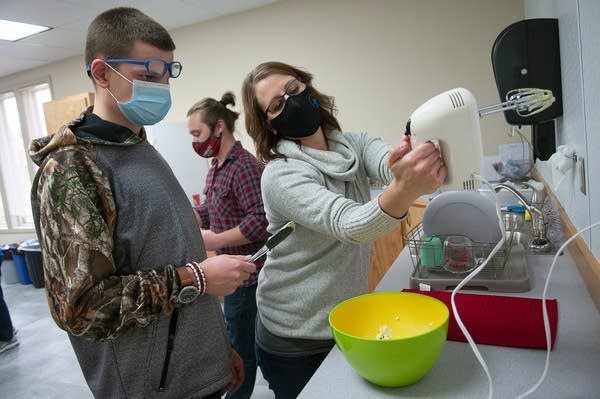Mankato program helps students develop skills, transition into community

Rebecca Zenk (right) shows Braiden Reinhart, 18, the different functions of a mixer while making blueberry muffins at the INSITE program in Mankato, Minn., on Friday.
Jackson Forderer for MPR News
Go Deeper.
Create an account or log in to save stories.
Like this?
Thanks for liking this story! We have added it to a list of your favorite stories.


